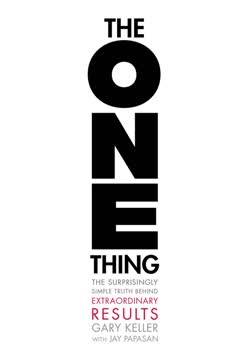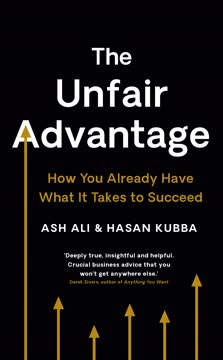Key Takeaways
1. Language learning is about communication, not perfection
Just communicate.
Embrace imperfection. The primary goal of language learning is to communicate effectively, not to achieve grammatical perfection. Many learners become paralyzed by the fear of making mistakes, which hinders their progress. Instead, focus on getting your message across, even if it means making errors.
Prioritize meaningful interaction. Seek out opportunities to use the language in real-life situations, such as conversations with native speakers, reading authentic materials, or watching movies in the target language. These experiences will help you develop a more natural feel for the language and improve your ability to communicate effectively.
- Don't be afraid to make mistakes
- Focus on being understood rather than being perfect
- Engage in authentic language experiences whenever possible
2. Motivation and attitude are crucial for language acquisition
To become a linguist you must overcome the different forms of resistance to the new language.
Cultivate genuine interest. Successful language learners are driven by a sincere desire to connect with the target culture and its people. This intrinsic motivation is far more powerful than external factors like grades or job requirements.
Develop a growth mindset. Believe in your ability to learn and improve. Recognize that language learning is a process that requires time and effort, but that anyone can become proficient with the right attitude and approach. Embrace challenges as opportunities for growth rather than viewing them as obstacles.
- Find personal reasons to learn the language
- Connect with native speakers and their culture
- View mistakes as learning opportunities
- Celebrate small victories and progress
3. Natural learning methods trump traditional classroom instruction
Language needs to be discovered by the learner. Becoming a linguist depends on you, not on schools or teachers.
Emulate child-like learning. Children acquire their first language naturally through immersion and meaningful interaction. Adult learners can benefit from adopting similar strategies, focusing on comprehensible input and authentic communication rather than memorizing grammar rules.
Create a personalized learning environment. Take charge of your learning by seeking out materials and experiences that align with your interests and goals. This self-directed approach allows you to learn at your own pace and in a way that is most effective for you.
- Immerse yourself in the language through various media
- Focus on understanding and using the language, not analyzing it
- Customize your learning materials and methods to suit your needs
- Seek out authentic language experiences beyond the classroom
4. Massive input through listening and reading is essential
As you acquire a new language using the "engine" method, you will start to feel the confidence to start talking with native speakers.
Prioritize comprehensible input. Expose yourself to large amounts of spoken and written language that you can mostly understand. This helps you internalize the language's patterns, vocabulary, and structures naturally.
Leverage repetition and variety. Listen to and read the same content multiple times to reinforce learning. Additionally, expose yourself to a wide range of topics and styles to broaden your language skills.
- Aim for at least one hour of listening practice daily
- Read extensively in your target language
- Use graded readers or simplified materials for beginners
- Gradually increase the complexity of your input materials
5. Systematic vocabulary acquisition accelerates fluency
To expand your vocabulary you have to listen and read a great deal. You need to be systematically working to add to your knowledge of words and phrases, You need to review them regularly.
Focus on high-frequency words. Start by learning the most common 2,000 words in your target language, as these typically cover about 80% of everyday communication. Then, expand your vocabulary based on your specific interests and needs.
Learn words in context. Instead of memorizing isolated word lists, acquire new vocabulary through meaningful contexts. Pay attention to how words are used in sentences and learn common collocations and phrases.
- Use spaced repetition systems to review vocabulary efficiently
- Create personalized word lists based on your encounters
- Study both individual words and multi-word expressions
- Aim to learn 10-20 new words or phrases daily
6. Embracing the target culture enhances language proficiency
As a linguist it is important to let go of the security of your native language and culture and broaden your identity.
Develop cultural empathy. Strive to understand and appreciate the values, customs, and perspectives of the target culture. This cultural awareness will not only enhance your language skills but also enrich your overall learning experience.
Adopt a new persona. When speaking the target language, try to embody the mindset and mannerisms of a native speaker. This can help you internalize the language more effectively and feel more comfortable using it.
- Engage with native speakers and their communities
- Consume media from the target culture (movies, music, literature)
- Participate in cultural events and traditions
- Be open to new ways of thinking and expressing yourself
7. Technology revolutionizes independent language learning
The Internet opens up a limitless source of interesting reading material, consisting of newspapers, magazines and many specialized articles, e-books and other material.
Leverage digital resources. Take advantage of the vast array of online materials, tools, and platforms available for language learners. These can provide authentic content, interactive exercises, and opportunities for communication with native speakers.
Create a personalized digital learning environment. Use technology to tailor your learning experience to your needs and preferences. This might include using language learning apps, joining online communities, or creating your own digital flashcards and study materials.
- Use language exchange apps to practice with native speakers
- Listen to podcasts and audiobooks in your target language
- Utilize online dictionaries and translation tools
- Participate in language learning forums and social media groups
8. Pronunciation and output skills require dedicated practice
Pronunciation should be a major area of emphasis from the beginning, and throughout the first period of studying a new language.
Focus on sound patterns. Pay attention to the unique sounds and intonation patterns of your target language. Practice individual sounds, word stress, and sentence rhythm to improve your overall pronunciation.
Engage in regular speaking and writing practice. While input is crucial, you also need to produce the language to develop fluency. Set aside time for speaking practice, even if it's just talking to yourself, and write regularly to reinforce grammar and vocabulary.
- Use shadowing techniques to mimic native speakers
- Record yourself speaking and analyze your pronunciation
- Seek feedback from native speakers or language partners
- Practice writing on various topics and have your work corrected
9. Language learning is a lifelong journey of self-discovery
Language learning is not primarily an intellectual activity. It requires enthusiasm and repeated and concentrated exposure to language contexts that become familiar over time.
Embrace the process. Recognize that language learning is a continuous journey rather than a destination. Enjoy the process of discovery and improvement, and don't be discouraged by temporary setbacks or plateaus.
Integrate language learning into your lifestyle. Make language acquisition a part of your daily routine and long-term personal growth. This approach ensures sustained progress and allows you to reap the cognitive and cultural benefits of multilingualism.
- Set realistic, long-term goals for language proficiency
- Celebrate milestones and progress along the way
- Seek opportunities to use your language skills in real-life situations
- Consider learning multiple languages to broaden your linguistic horizons
Last updated:
FAQ
What's "The Linguist: A Personal Guide to Language Learning" about?
- Author's Journey: The book is a personal account by Steve Kaufmann, detailing his experiences and methods in learning multiple languages.
- Language Learning Philosophy: It emphasizes a natural and enjoyable approach to language learning, focusing on communication rather than perfection.
- Practical Guide: The book serves as a guide for language learners, offering insights into effective strategies and attitudes necessary for success.
- Cultural Exploration: Kaufmann shares his adventures and cultural experiences, illustrating how language learning can enrich one's understanding of different cultures.
Why should I read "The Linguist: A Personal Guide to Language Learning"?
- Proven Methods: The book offers tried-and-tested methods from someone who has successfully learned multiple languages.
- Inspiration and Motivation: Kaufmann's personal stories and achievements can inspire readers to pursue their own language learning goals.
- Practical Advice: It provides practical tips and strategies that can be applied to any language learning journey.
- Cultural Insights: Readers gain a deeper appreciation for the cultural aspects of language learning, enhancing their overall experience.
What are the key takeaways of "The Linguist: A Personal Guide to Language Learning"?
- Commitment is Key: Success in language learning requires a strong commitment and a willingness to immerse oneself in the language.
- Natural Learning Approach: Focus on listening, reading, and absorbing the language naturally rather than memorizing grammar rules.
- Cultural Connection: Understanding and appreciating the culture associated with a language can significantly enhance learning.
- Self-Directed Learning: Take charge of your learning process by seeking out content and experiences that interest you.
How does Steve Kaufmann suggest overcoming resistance to language learning?
- Positive Attitude: Cultivate a positive attitude towards the language and culture you are learning.
- Embrace Mistakes: Accept that making mistakes is a natural part of the learning process and use them as opportunities to improve.
- Find Motivation: Identify personal reasons for learning the language, such as cultural interest or professional goals, to stay motivated.
- Engage with Native Speakers: Build relationships with native speakers to practice and gain confidence in using the language.
What is the "engine" of language learning according to Steve Kaufmann?
- Listening: Regular and repetitive listening to content that interests you is crucial for language acquisition.
- Reading: Engage with written content to reinforce listening and expand vocabulary.
- Vocabulary Study: Systematically learn and review new words and phrases to build a strong language foundation.
- Integration of Skills: Combine listening, reading, and vocabulary study to create a powerful synergy for language learning.
What are some of the best quotes from "The Linguist: A Personal Guide to Language Learning" and what do they mean?
- "Just Communicate": Emphasizes the importance of focusing on communication rather than perfection in language learning.
- "Be adventurous": Encourages learners to take risks and immerse themselves in the language and culture.
- "Input not grammar": Highlights the significance of absorbing the language through listening and reading rather than focusing solely on grammar rules.
- "Create Intensity": Stresses the need for intense and focused learning periods to achieve breakthroughs in language proficiency.
How does Steve Kaufmann view the role of teachers in language learning?
- Facilitators, Not Providers: Teachers should inspire and guide learners rather than being the sole source of language knowledge.
- Encourage Self-Discovery: Learners should be encouraged to explore and discover the language on their own terms.
- Provide Resources: Teachers can offer valuable resources and feedback but should not dictate the learning process.
- Focus on Communication: Classrooms should prioritize real communication and interaction over rote learning and grammar drills.
What is Steve Kaufmann's perspective on the relationship between language and identity?
- Cultural Integration: Learning a language involves adopting certain cultural behaviors and perspectives.
- Broadening Identity: Embracing a new language and culture can expand one's sense of identity and understanding of the world.
- Imitation and Adaptation: Successful language learners often imitate native speakers and adapt to cultural nuances.
- Universal Human Connection: Language learning highlights the fundamental similarities among people, transcending cultural and linguistic barriers.
How does "The Linguist: A Personal Guide to Language Learning" address the use of technology in language learning?
- Modern Tools: Emphasizes the use of modern technology, such as the Internet and portable listening devices, to enhance learning.
- Access to Content: Technology provides access to a vast array of authentic language content for listening and reading.
- Vocabulary Management: Digital tools can help learners systematically manage and review vocabulary.
- Flexible Learning: Technology allows for learning anytime and anywhere, making it more convenient and personalized.
What are Steve Kaufmann's views on the importance of pronunciation in language learning?
- Early Focus: Pronunciation should be a major focus from the beginning of language learning.
- Achievable for All: Anyone can learn to pronounce a language correctly with dedication and practice.
- Listening and Imitation: Repeated listening and imitation of native speakers are key to improving pronunciation.
- Balance with Communication: While pronunciation is important, the primary goal should be effective communication.
How does Steve Kaufmann suggest setting goals for language learning?
- Clear Objectives: Define specific goals for language proficiency, such as vocabulary size or fluency level.
- Time Commitment: Decide on the amount of time you can dedicate to language learning each day or week.
- Measure Progress: Regularly assess your progress towards your goals to stay motivated and on track.
- Adjust as Needed: Be flexible and adjust your goals based on your progress and changing needs.
What is the significance of "Zhuangzi’s Crooked Tree" in "The Linguist: A Personal Guide to Language Learning"?
- Metaphor for Learning: The crooked tree symbolizes the idea that language learning should be natural and adaptable, not forced into rigid structures.
- Appreciate Uniqueness: Emphasizes the value of appreciating the unique aspects of each language and learner's journey.
- Effortless Harmony: Reflects the Taoist philosophy of achieving mastery through harmony with one's nature and surroundings.
- Personal Growth: Encourages learners to embrace their individual paths and resources in language learning, leading to greater success and enjoyment.
Review Summary
The Way of the Linguist receives mixed reviews, with an average rating of 3.50. Readers appreciate Kaufmann's language learning approach, emphasizing exposure over memorization and finding engaging materials. Many find the book repetitive and in need of editing, but useful for beginners. Some criticize the lengthy autobiographical content and promotion of Kaufmann's website. Despite these drawbacks, readers value the author's experience and insights on language learning, particularly the importance of attitude and consistent effort.
Similar Books






Download PDF
Download EPUB
.epub digital book format is ideal for reading ebooks on phones, tablets, and e-readers.




